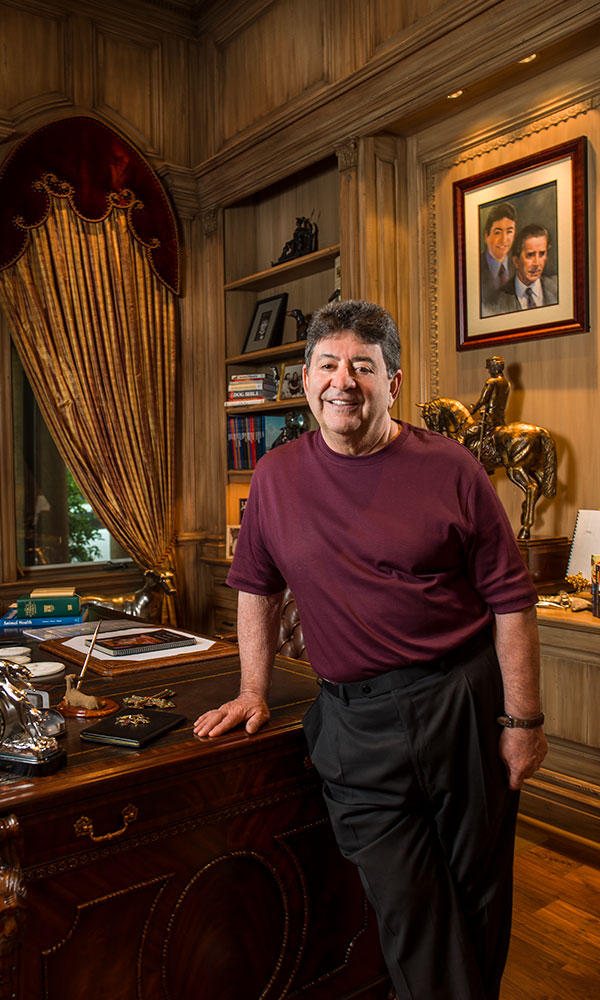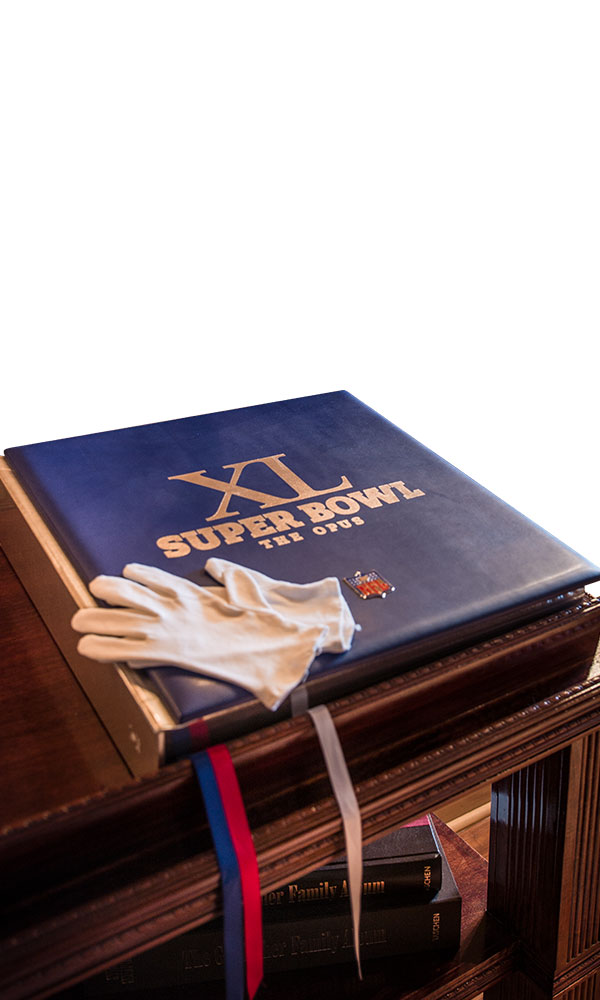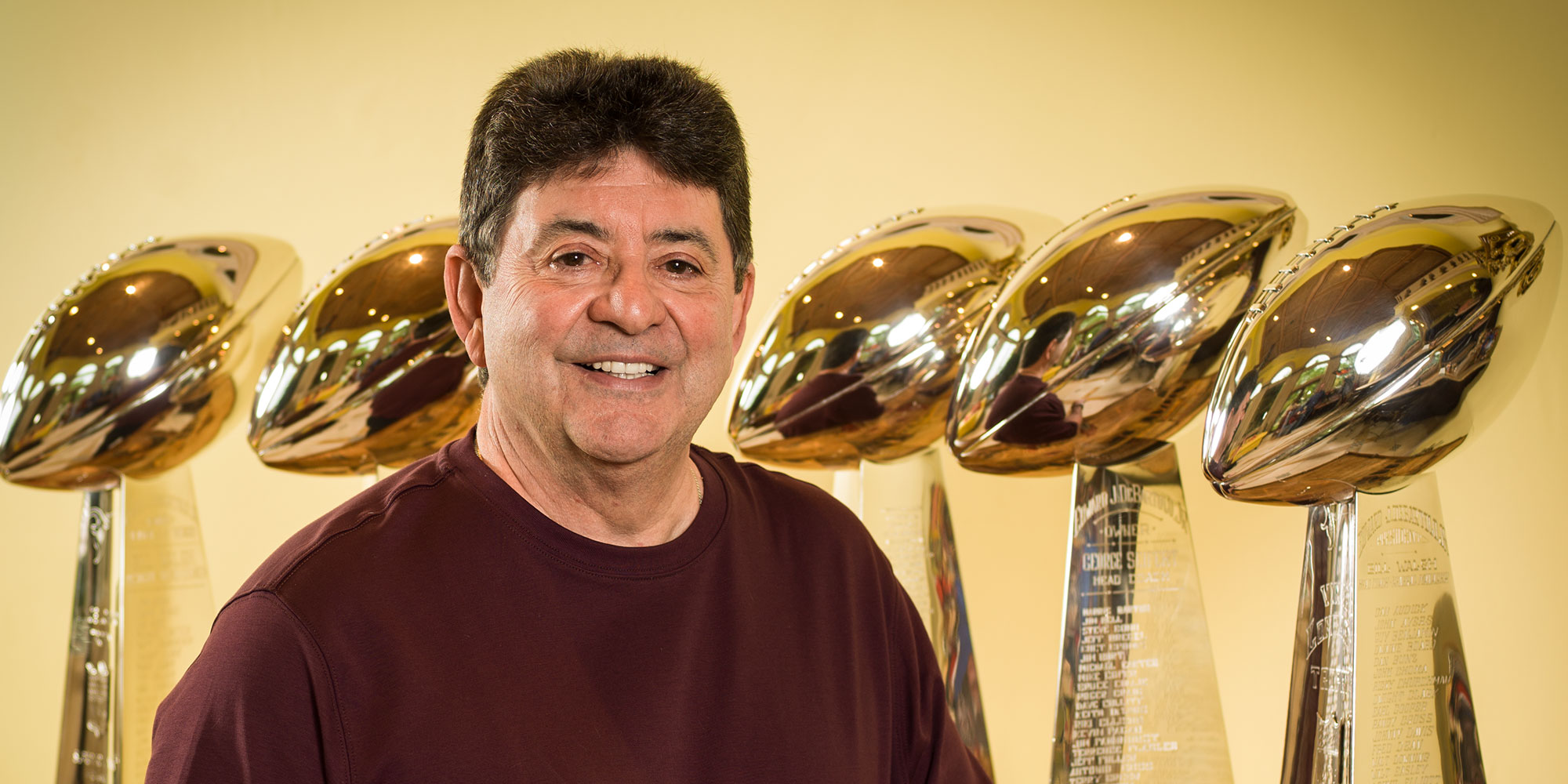Eddie DeBartolo Jr. is Leading the Charge
Originally published in TAMPA Magazine’s August/September 2016 edition.
Updated July 5, 2018.
From San Francisco Bay to Tampa Bay, Eddie DeBartolo Jr. has carved a unique place in the hearts and minds of people across the country. Today, he’s back in Tampa tackling local development — and he has no plans to stop anytime soon.
You and your family can choose anywhere you would like to live. Why Tampa?
My father spent a lot of time developing shopping centers in Florida. We had a personal relationship with Mayor Greco, who also worked for us, and when we were deciding between Orlando and Tampa, he convinced us to move to Tampa. It’s been home since 2000, and we wouldn’t live anywhere else.
On February 6, 2016, you were inducted into the Pro Football Hall of Fame. In earlier interviews you report being in a state of shock at having been inducted. What’s the feeling like now that it’s settled in a bit?
I’m still in shock. It was an amazing and unbelievable day. I was totally humbled. Going back to 1977 and taking the team over and going through the seasons, some good some bad, I never thought this would happen. But Bill Parcells called me when I received the notice, and he said, “Eddie, let me tell you something. This is one club they can’t throw you out of.”
How did they notify you?
I was in Montana, and they had a meeting in Canton. I got a call from David Baker, who’s president [of the Pro Football Hall of Fame], that I was the single contributor candidate. They had their meeting the day before the Super Bowl in San Francisco. That was a crazy day because of what they had you do. They put [the 15 candidates] in separate rooms, and the only way you knew whether or not you were elected was if David Baker came to your room with a camera crew. I waited with my wife in the room. Just before 4 p.m., I heard some commotion and a knock on the door. I looked out and it was him. I opened the door, and he grabbed me and hugged me and said, “Congratulations.”

You presided over the 49ers during arguably the greatest dynasty in NFL history. What was the atmosphere like in San Francisco at that time?
Well, we had some tough times. Back in 1977, ’78 and ’79, we didn’t have a great team. And in 1979, we had a double murder in the city. A mayor was murdered and another city official, and the city was a total mess. At that same time, that year I had hired Bill Walsh to be my coach. And in 1980, we also had a difficult year. Then, in 1981, we started putting everything together with the draft picks we had gotten from ‘79, like Joe Montana and Ronnie Lott. We had an amazing year in 1981 that none of us expected. We were 13-3 and we went to the playoffs, played the Giants, then the Cowboys and went on to frigid Detroit and played Cincinnati in the Super Bowl and won that, and that kind of got the ball rolling for the success of the team.
I’m assuming it helped heal the city a little bit.
Totally. The city was still reeling from everything. George Moscone was the mayor, and he was a wonderful man. When he passed away, Dianne Feinstein became mayor. [After the Super Bowl], we went back and had a parade, and I think she estimated attendance at well over 1 million. To this day, when I talk to her, she really thinks it kind of solidified and brought the city back together.
The 49ers won five Super Bowls with you as the owner. Is there a particular one that was most special or stood out to you?
Wow. I guess the first one was always the surprise. But probably the Super Bowl in ’95, the last one. My dad had just passed away. That was probably the one that meant a lot. We had a different quarterback. It was the only Super Bowl Joe didn’t play in, Steve Young played in it. They were all so special, but that one, probably because of my dad dying just a month or so before, that game probably meant the most.

As far as the team goes, you were known to travel in style, and you treated them like a family. Was that intentional and do you think it was a driving force in their success?
Well, that all started in Youngstown, with our company and the way my dad started years and years ago back in the ’40s when he got into business. He always treated all of his employees like they were members of the family, whether someone was sick in their family or there was a birthday or a baby or something. We had a lot of employees: 700 almost in Youngstown and another 11,000 throughout the country in our malls and race tracks. I think that got instilled in me, the way you treat people is the way you want to be treated. I think I carried that on into San Francisco. We did things differently with the players. I never got involved in contract negotiations; I always let the general manager or Coach Walsh do that. My relationship with the players was more a personal relationship. We weren’t that different in age — me and the players — at that time, so we really became close.
Do you still keep in touch with any of them today?
I get groups together about four times a year. Last week, eight of us went to Vegas for two nights. I had all my guys — Joe Montana, Jerry Rice, Roger Craig. We spent two nights in Vegas, and we were just like a bunch of old giddies, just talking and reminiscing. I stay in touch with as many people as I can. We have some players who have gone through bad times, and I just stay in touch with them. I guess that relationship never stops.
Were there any parallels between running a successful business and a successful football team?
I think so. I think you have to have consistency, and we tried to do that. We obviously did it in business. My dad was an amazing businessman and a great father. I think I tried to carry that into my ownership with the 49ers, to be consistent with the team and the front office. I think we were successful in doing that — it helped keep everyone on the same track.
Your real estate business was largely built on shopping malls. Describe what that business is today.
It’s different today. There aren’t that many malls being built. Getting the approvals — it’s almost impossible. It takes years. If you have a piece of property, before you can start a mall, even if you have everybody in place, it’s seven to eight years. Right now, we’re going to open a mall in Hawaii in October. It’s going to be one of the few that are going to open this year. It’s going to be a large mall, it’s about 1.5 million square feet. But it’s changed because it’s just way more complicated.
Any proposed projects in the Tampa Bay area you want to mention?
Well, we have Georgetown [a luxury housing development between Westshore Boulevard in South Tampa and Old Tampa Bay], which is a great piece of property. We’ve already been working on all our approvals and everything. I think it’s probably the last really, really good piece of property.
I heard something about “the best views of downtown.” Does that mean it’ll have high-rise towers?
I think it’ll be multi-use. We haven’t really decided exactly what it’s going to be, but it’ll be housing, multi-use high-rise and some commercial.
Employment opportunities and excitement about things happening downtown are leading to a lot of positive headlines. Do you share that enthusiasm?
Jeff Vinik is a really good friend of mine, and I can’t say enough about him. He’s an entrepreneur with great, great foresight. Tampa’s lucky to have him. Hopefully I’m going to be able to do something with him. I just think he’s done a phenomenal job. His plans are great. He’s going to reinvent downtown. I remember Tampa years ago — when it was vibrant downtown, we had department stores. We had Maas
Brothers, Belk Lindsey and different stores. I’ve always said I think downtown needs commercial. I think Jeff has a plan that’ll help spur other little stores, more restaurants. Tampa is a great city. (Editor’s Note: Since our interview with Eddie Debartolo in 2016, Jeff Vinik and Strategic Property Partners have begun construction and development of Water Street Tampa in downtown).
In your view, what are some crucial things city leadership needs to do to keep that positive momentum going?
Work closely with them on entitlements. You don’t have to give the store away, just make it easier. You try and cut through the red tape so you can get these things done — you just can’t wait eight or 10 years anymore to get these things started. It takes long enough to build them. Make it easier to do the developments.
You co-founded the Brooks DeBartolo Collegiate High School in Tampa with Derrick Brooks. What was the motivation behind building a college-style high school?
Derrick. We’ve been friends since I moved down here. He came to me, and he said, “I have an idea. Let’s do a high school,” and he gave me his thoughts and his ideas. I was totally on board. We’ve gotten A ratings for the last six years. We’re trying to really make this a true high school, with a football program and a football stadium. The girls’ basketball team did phenomenally. I went to the opening baseball game of the season, and they’re doing great. Our principal, Kristine Bennett, is the best. I just can’t say enough. Derrick spends way more time there than I do. He’s looked up to by everybody. It’s just nice to be able to see that these kids are getting really, really good education. And lots are going on to college.
Finally, where do you tell out-of-town guests they have to go?
When I’m downtown, I go to Malio’s. I go to Carmine’s a lot. I have to say, my wife and everybody has done a phenomenal job with our restaurant. It’s called Sacred Pepper, and we opened on April 19. I think it’s going to be something new to Tampa. Something different.
Check out another Leading Man of Tampa, Brian Lamb, here.



